Writer Geoff Johns and artist Todd Nauck teaming up to work on a new Stargirl series just makes sense. Johns, a prolific comics and TV writer best known for his contributions to DC, created Courtney Whitmore/Stargirl in 1999 to honor his late sister, and his first major work for DC was on her solo series, Stars and S.T.R.I.P.E.. Nauck drew the original Young Justice ongoing series (with writer Peter David) from 1998 until 2003, immortalizing himself as a fan-favorite creator whose work has the charm and the chops to endear any character, whether they be popular or obscure, to readers of every (stars and) stripe.
The Beat recently had the opportunity to chat with Johns and Nauck about their upcoming collaboration along with colorist Matt Herms and letterer Rob Leigh, a six-issue limited series dubbed Stargirl: The Lost Children. Part of the Johns-led ‘The New Golden Age’ initiative at DC, the story picks up where last year’s Stargirl Spring Break Special left off and sees Stargirl and Red Arrow teaming up to rescue missing Golden Age sidekicks from a villainous being known only as the Childminder. Johns and Nauck were both incredibly gracious with their answers, and we hope you enjoy what they have to say as much as we did!
Hayden Mears: Let’s start with how Stargirl: The Lost Children came about and what it’s about.
Geoff Johns: First off, it’s a real gift for me to work with Todd for a lot of reasons. When I first wrote Stars and S.T.R.I.P.E., Todd, I think you were the first pro I met at Comic-Con that I showed all the black-and-white issues before they came out. I was a huge fan of Young Justice. Like a GIANT fan of Young Justice, specifically because of Todd’s work. I actually used Young Justice in issues 4 and 5 of Stars and S.T.R.I.P.E. because I was such a fan. So to me this was kinda full-circle back to the beginning, when I first started in comics. Working with Todd on an event that dives into these weird, obscure teenage Golden Age heroes has been a blast.
I love the obscure characters. I love the young characters that DC has. They’re so known for sidekicks so to do a book that was delving into the very first generation of sidekicks and what it was like from their perspective…This was before anyone had taken on the legacy. We open our issue with this sidekick named Dan the Dyna-Mite, and the reason we do that is that he’s the first sidekick whose mentor was killed.
I know people think it’s gimmicky and could be silly, but the truth is, all of us are sidekicks…we were kids who didn’t have anything else. We were outcasts, or we were orphans, or we were delinquents. We didn’t have a clear path to the future or a path to purpose. And these heroes back in the day, they’d take the time to help kids. That, to me, if you look at the origins of the original sidekicks, a lot of them are in need. It was really…to give back in such a specific way, in such a tactile way, is reframing it as, “This is something heroes used to do. They used to give back to the next generation.” So we examine the first generation of young heroes. We’re adding a lot of new characters that are previously unseen.
Mears: Childminder is one of them, yeah?
Johns: Yeah, Childminder, Ladybug, Salem the Witch Girl, Cherry Bomb (who’s turning out to be my favorite to write)…There’s a lot of characters we are retroactively introducing. Everybody had a sidekick back in the day and we hinted at that in Flashpoint Beyond but really we introduce it here. But the story’s all about Stargirl and Red Arrow, who’s Green Arrow’s younger sister, as they pick up a mystery about some missing teenage heroes from back in the day. They stumble upon this mystery and they start to uncover, where did this missing generation of heroes go? The mystery leads them to this villainous threat that’s behind many of the disappearances.
Mears: Is Childminder as creepy as the name makes it sound?
Todd Nauck: When Geoff gave me the write-up on Childminder, he had a basic overview and I was able to insert my ideas and take on it. Essentially, without spoilers, I’d say she’s like a nightmarish nanny. I did some research on Grimm’s Fairy Tale type stuff and turned that into a Golden Age character, something that would be seen in the Golden Age, but then give it some modern-day sensibilities. It could walk between the two eras, whether it be the Golden Age and as a present-day villain. These were things I used as a springboard based on Geoff’s initial write-up on Childminder.
Johns: We wanted to create a brand-new tapestry of characters to play with so that we’re introducing new heroes and villains at the same time.
Mears: Stargirl, more than most DC characters, exemplifies hope. The comics, as well as the CW show, portray her so consistently and so well. She’s a beacon in so many ways, and she’s important, especially in these times. Walk me through an instance in your lives (or the life of someone you love) where Stargirl has inspired hope or facilitated positive change in an unexpected way. Hope is something that’s stronger when it spreads.
Johns: I agree with you, Hayden. Brec [Bassinger] embodied the hope, the optimism, the can-do attitude every day and that’s just infectious. But when you’re creating a show like Stargirl, which has a positive inner moral compass, she’s the opposite of a reluctant hero. Usually, she is in over her head and usually, initially outmatched, perhaps, but she always pictures a way out and always perseveres. Even when she’s knocked down, she gets back up because she believes in the goodness of people and she believes in a better tomorrow. Stargirl never turns away from a problem and she always sees the good first. I think seeing the good first and looking for the good first and nurturing the good where you can find it is important. When you’re cynical, I don’t know what you’re giving back to the world. I’m not quite sure what a cynical attitude does, except make you feel superior.
So Stargirl’s light, for me, affected every day on the set, every day in the writers’ room, every day in editing, because that exuberance and that light were present. Everyone grabbed onto it. Our fanbase for the show is so positive and so wonderful. I’m really grateful that we did three great years. I’m super excited about the closing of this series. We built it to end in a real perfect way. It affected all of us on the show very positively, and of course, me personally.
Nauck: I think Geoff hits what Stargirl is and brings right on the head. She was birthed from his imagination and experience so it’s hard for me to really add on top of that. My experience already working on this comic has given me Young Justice vibes. The fun, the joyfulness, the playfulness, the mystery…we put a bright character into a dark situation. When you have that brightness in the dark, the brightness can shine brighter because of the contrast, which has been a lot of fun for me to draw. I hope that this Stargirl series has a similar effect as Young Justice. The Young Justice fanbase has been present and vocal for these past 20 years since the series ended. A decade ago, I met a brother and sister who were probably in their early 20s, at a comic con. They came up to my table to say, “When we were kids, we fought all the time. We’d bicker. We just couldn’t get along. But the one thing we could agree on was Young Justice. We could geek out on Young Justice together.” So Young Justice was their touchstone at the time. It brought them hope and joy.
Mears: One of the most potent lessons the Stargirl character can teach us is that seeing the best in people doesn’t have to be this naive, frowned-upon thing. To use Geoff’s wording from earlier, it’s cynical to think that looking for the good first makes you childish or foolish. There is this childlike innocence to Stargirl/Courtney Whitmore. She always comes to a positive conclusion about people. What can we learn from her?
Johns: It’s better to be optimistic and hope for the best, and every once in a while you’re gonna have to deal with the worst and figure it out. One of the things Courtney would say is to always have people in your life to love, always have something to look forward to, and always have something that you’re focused on.
Mears: Circling back to Stargirl: The Lost Children, is there anything else you want to mention?
Johns: The goal was to create a super-fun DC book with beautiful art by Todd, an adventure that harkens back to classic DC comics but with a real modern sensibility. Repopulate DC’s young heroes!
Nauck: I anticipate Geoff’s script each time. I’m so excited to read it and find out what happens next. He leaves me hanging on these cliffhangers! Geoff writes epic, double-page spreads for me every issue. It has been a blast, especially to come back to DC and do comics for DC again.
Published by DC Comics, Stargirl: The Lost Children #1 (of 6) is due out in stores and digitally tomorrow.


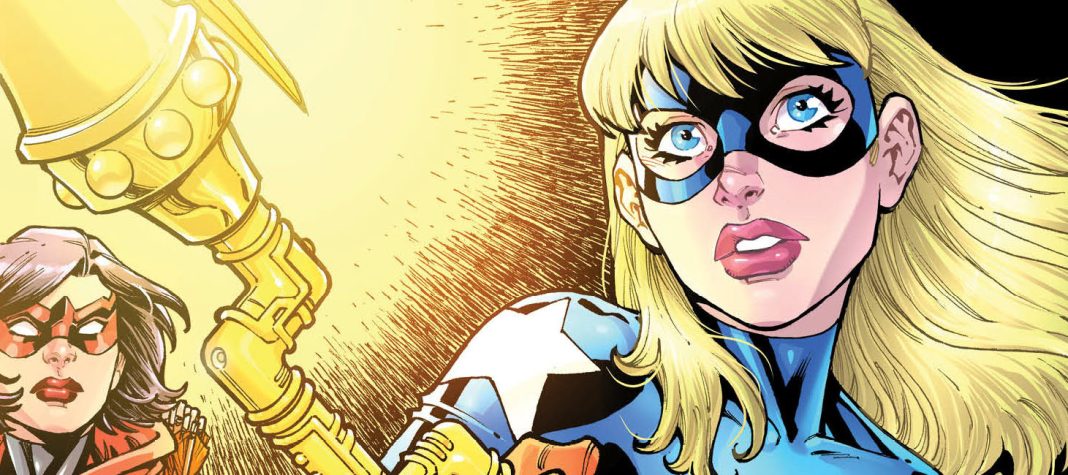
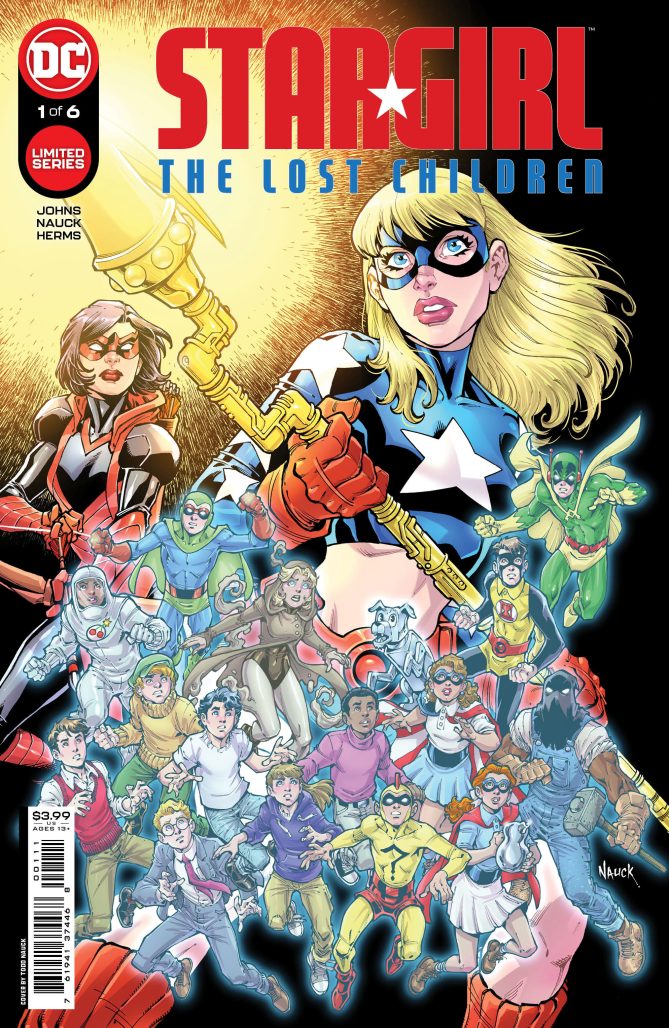
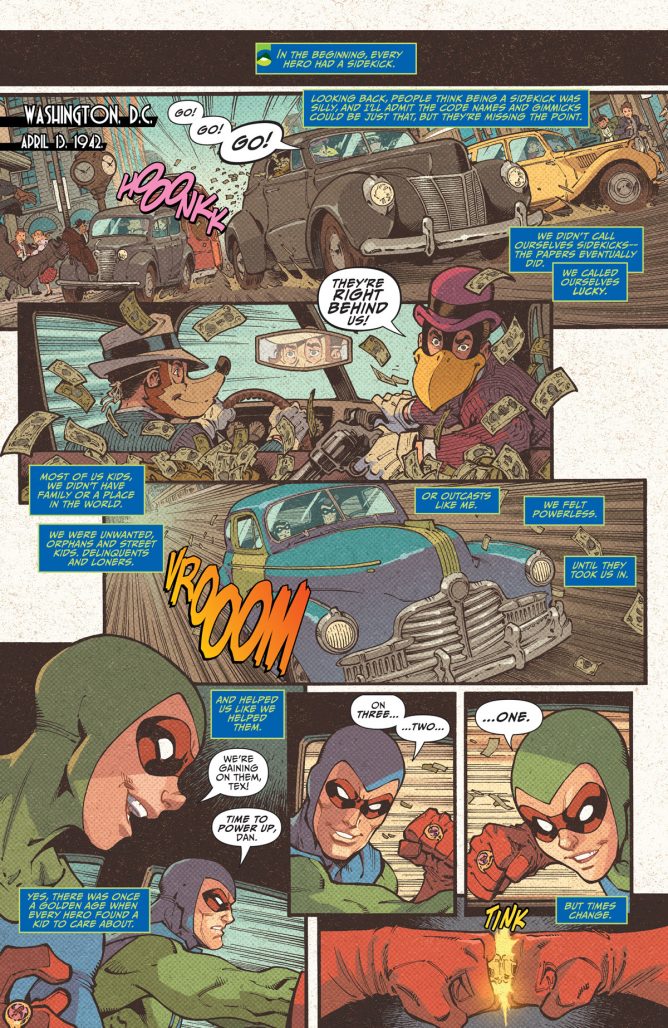
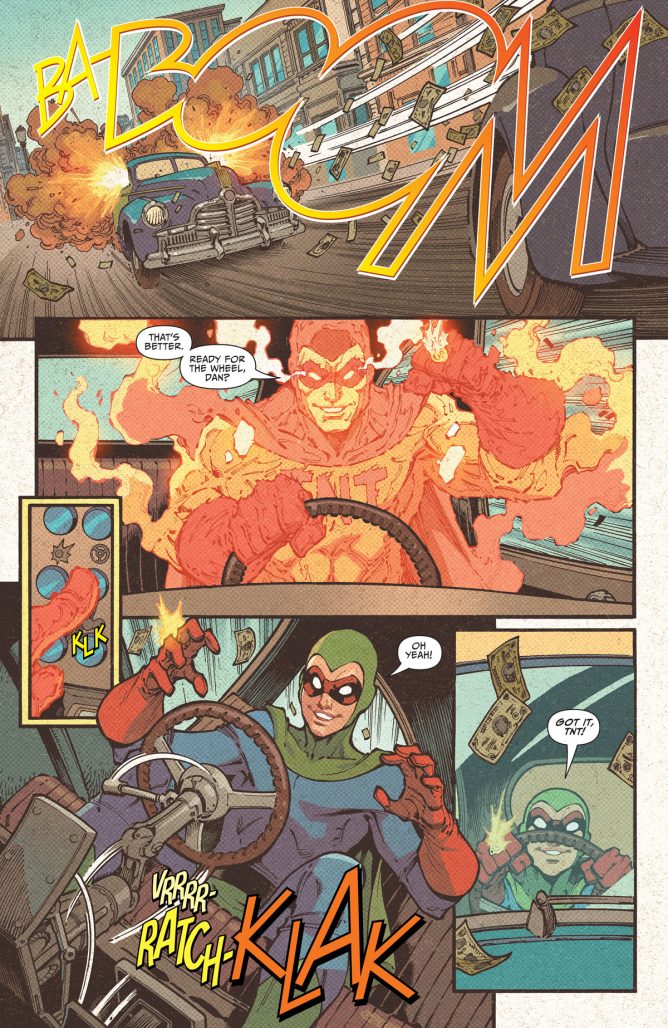
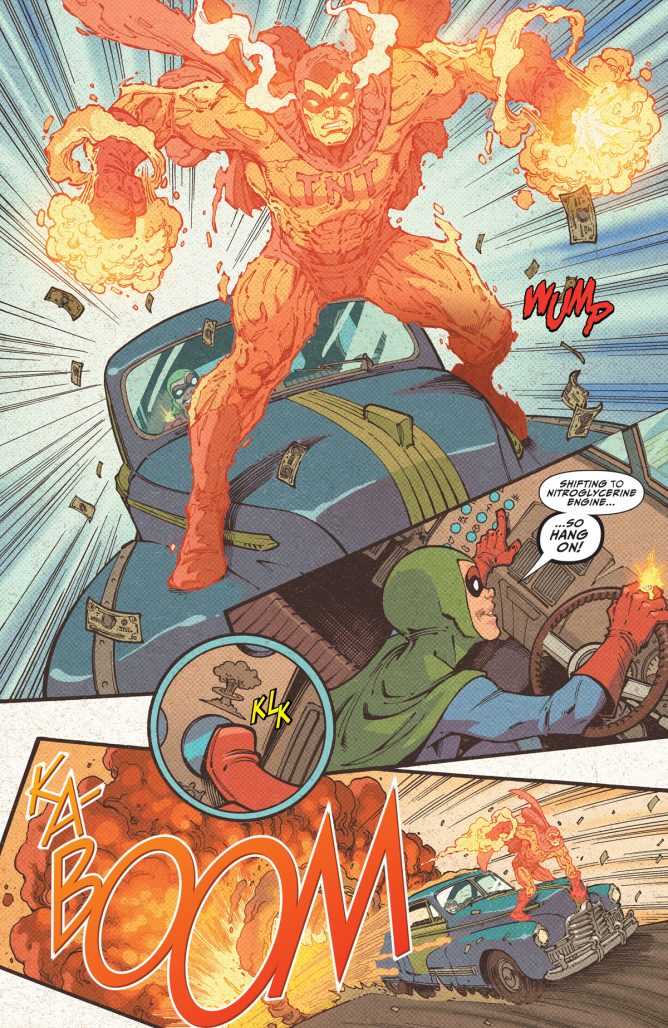
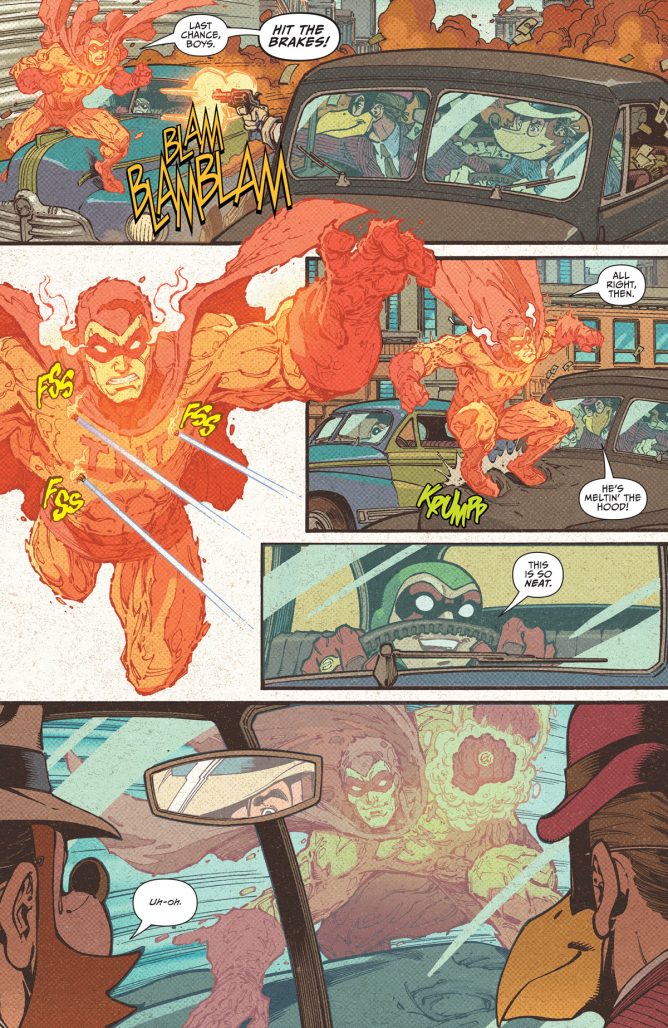
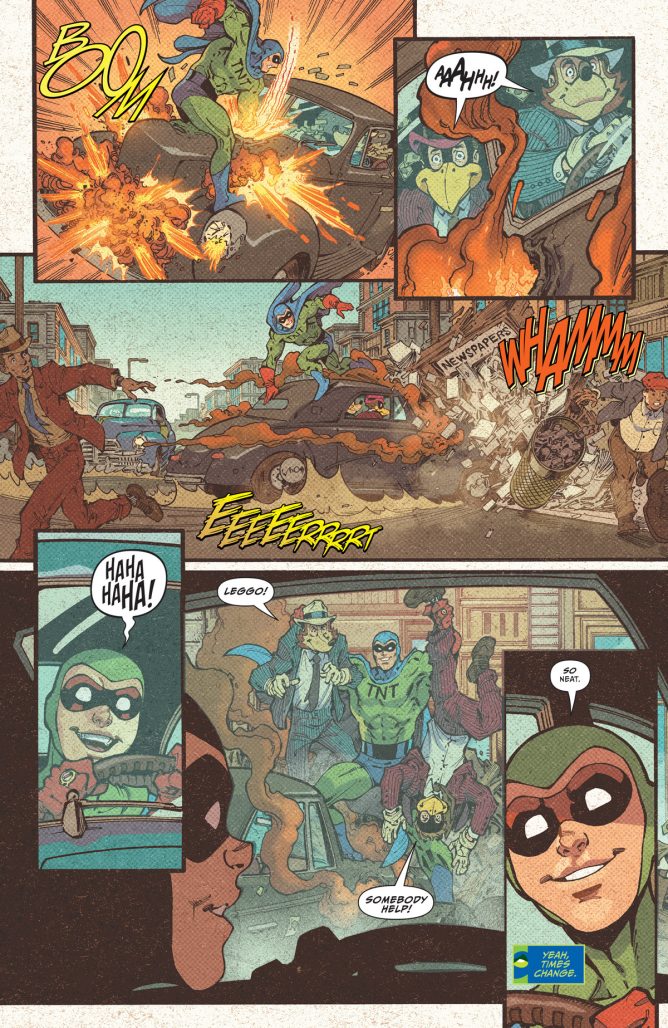



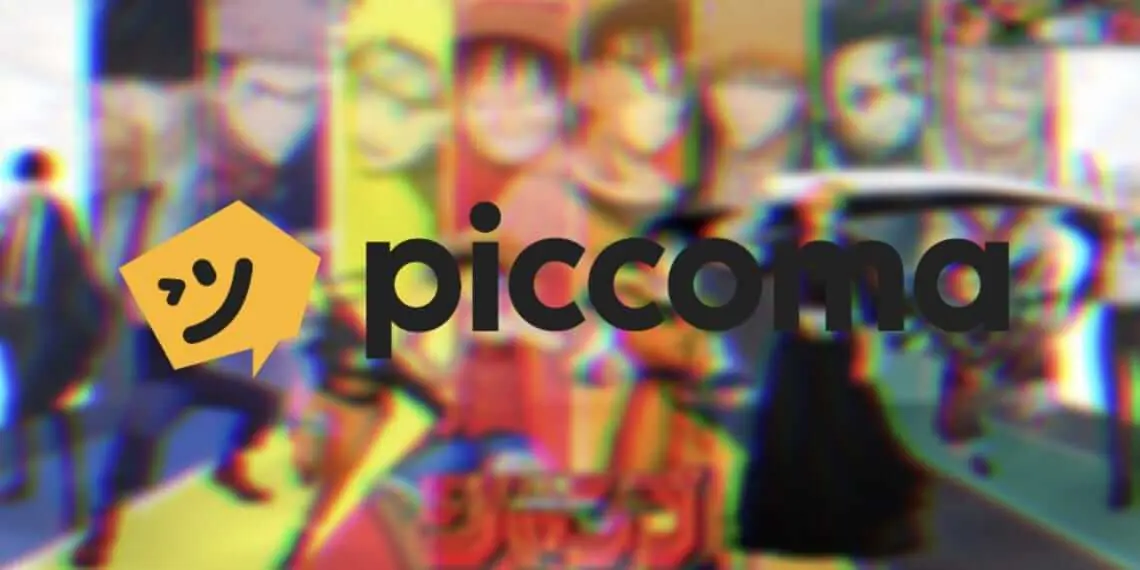

I wish the comic press would ask Johns more about his overall game plan. I just noticed in DC’s solicits that the “Justice Society” book isn’t an ongoing, it’s a 12 issue mini-series. But it’s pretty much been reported on as an ongoing. Maybe he/DC haven’t been clear it’s not? Also, Johns has been planting seeds for his return to the JSA/Golden Age characters in “Doomsday Clock” and the “Flashpoint” sequel that just wrapped up. So are these limited “Stargirl” and “Justice Society” runs the END of something or the MIDDLE of whatever long form story Johns is writing in his corner of the DCU? It would be nice to know because, while a fan of both Johns’ prior “Stargirl” and “JSA” series, I’m not keen on jumping on board these new series if they are just some continuation of the Flashpoint/Watchmen period of his career.
Comments are closed.